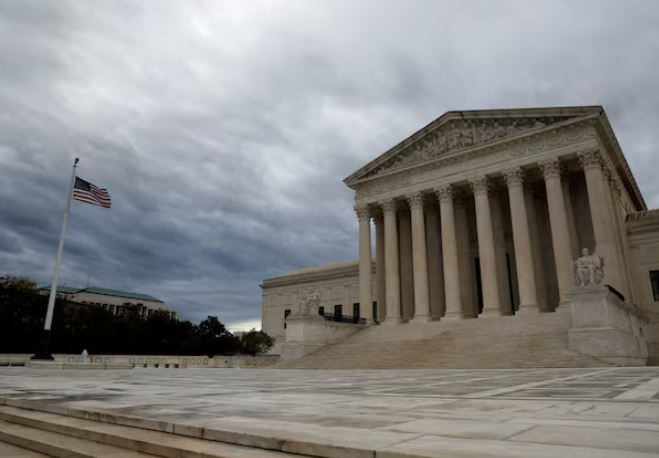On Tuesday, the Supreme Court signaled its willingness to uphold the legality of a 2022 regulation from President Joe Biden’s administration that targets “ghost guns,” largely untraceable firearms that have surged in crime nationwide.
The justices heard arguments in the administration’s appeal against a lower court’s ruling, which stated that the U.S. Bureau of Alcohol, Tobacco, Firearms and Explosives (ATF) exceeded its authority by issuing the rule aimed at regulating parts and kits for ghost guns. Consumers can easily buy these products online and assemble them at home without serial numbers or background checks required for other firearms.
Plaintiffs, including parts manufacturers, gun owners, and gun rights groups, sued in federal court in Texas to block the rule. Based on their questions to the administration’s and plaintiffs’ lawyers, the justices appeared satisfied with the rule’s scope and limitations. The court maintains a 6-3 conservative majority.
The regulation clarifies that these kits and components fall under the definition of “firearm” according to the 1968 Gun Control Act. Chief Justice John Roberts expressed skepticism regarding the classification of an unfinished frame or receiver—essential firearm components that require minimal effort to complete. “What is the purpose of selling a receiver without the holes drilled in it?” he asked Peter Patterson, the lawyer representing the challengers.
Patterson argued that hobbyists seek to “construct their own firearms,” similar to individuals who routinely work on their cars. Roberts countered, suggesting that drilling a couple of holes does not provide the same satisfaction as working on a car.
U.S. Solicitor General Elizabeth Prelogar defended the regulation by highlighting that the ghost gun market primarily serves individuals prohibited by law from purchasing firearms, including minors and those with violent criminal histories. “What the evidence shows is that these guns were being purchased and used in crime. They were sold to be crime guns,” Prelogar stated, noting her experience assembling one of these kits.
The regulation mandates that manufacturers of firearm kits and parts, such as partially complete frames or receivers, mark their products with serial numbers, obtain licenses, and conduct background checks on purchasers, as required for commercially made firearms. “The industry has followed those conditions without difficulty for more than half a century, and those basic requirements are crucial for solving gun crimes and keeping firearms out of the hands of minors, felons, and domestic abusers,” Prelogar emphasized.
In recent years, she pointed out, some companies challenging the new regulation have sought to circumvent these requirements by selling firearms as easy-to-assemble kits that require minimal work to become functional. “Our nation has seen an explosion in crimes committed with ghost guns,” she added.
Some conservative justices pressed Prelogar on the limitations of the language underpinning the rule. Justice Samuel Alito questioned whether individual components could be considered weapons, offering a culinary analogy. “I put out on a counter some eggs, some chopped-up ham, some chopped-up pepper and onions. Is that a western omelet?” Alito asked.
“No,” Prelogar replied, explaining that those items have well-known other uses. “The key difference here is that these weapon parts kits are designed and intended to be used as instruments of combat, with no other conceivable use.”
In 2023, Judge Reed O’Connor from Fort Worth, Texas, invalidated the rule, claiming that the ATF had impermissibly “rewritten the law” without congressional input. The New Orleans-based 5th U.S. Circuit Court later upheld O’Connor’s decision. However, the Supreme Court reinstated the rule pending the administration’s appeals.
In a related gun case, the Supreme Court rejected a federal rule banning “bump stocks”—devices that allow semiautomatic weapons to fire rapidly like machine guns. The United States, which boasts the world’s highest gun ownership rate, remains deeply divided over how to address firearm violence, including frequent mass shootings. In three significant rulings since 2008, the Supreme Court has expanded gun rights, including a 2022 decision affirming that the U.S. Constitution protects an individual’s right to carry a handgun in public for self-defense.

